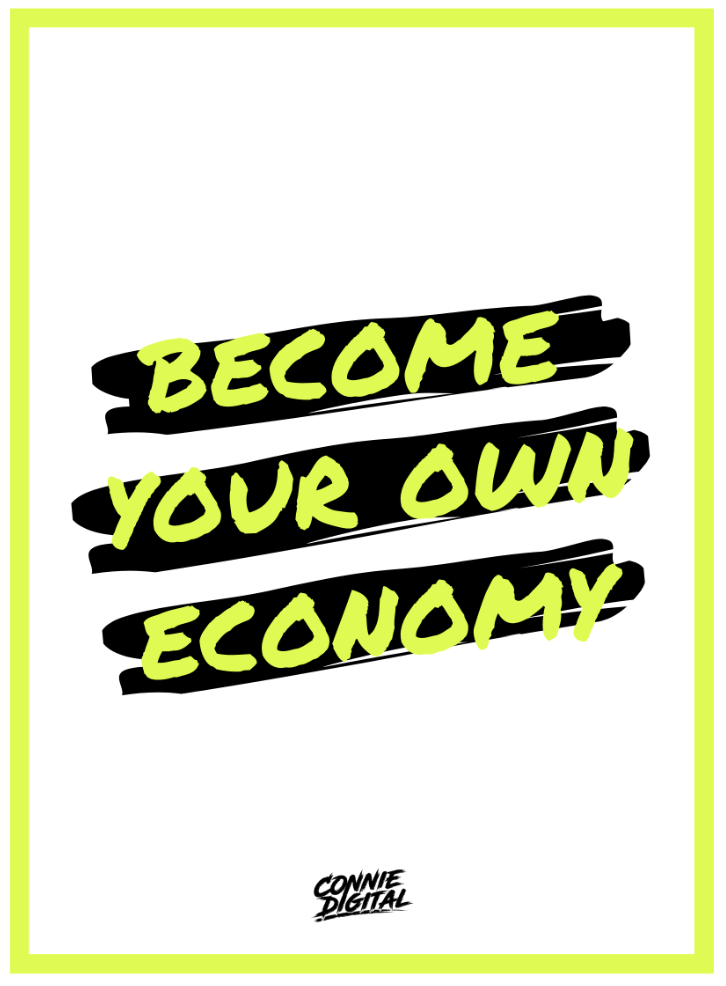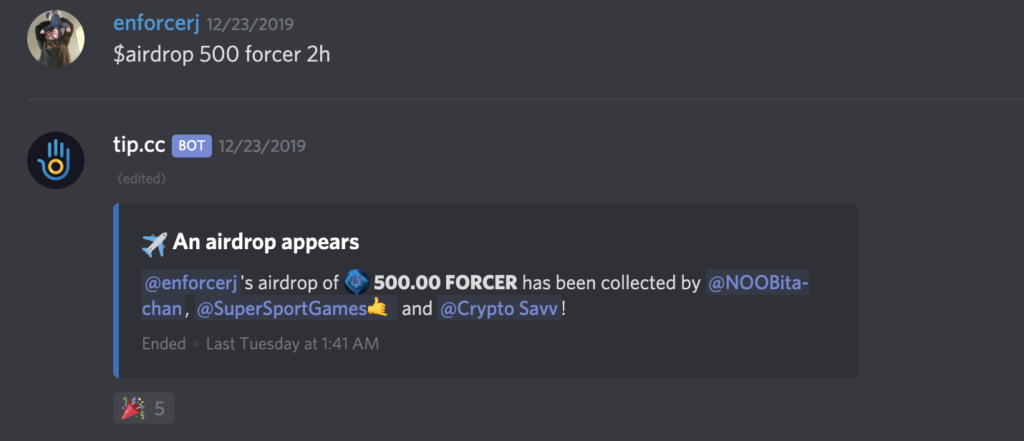Introducing Open Communities
Last year, before the launch of Roll, we laid out a vision for the company: to create a platform-independent social money layer for the web. This means the value of the networks that a digital community creates online become economically independent from the platforms themselves.
This newly decoupled network value can now freely pass through the platforms we use everyday in a manner as easy as sending a message.
Utilizing the Ethereum blockchain and its emerging open finance ecosystem not only establishes a market for the network value of a digital community (Claim 10 SKULL) but allows it to be exchanged for another (Claim 5 SCB).
The tools mentioned above create a pathway for digital communities to enter the open finance space and become their own economy.

We’ve witnessed this many times at Roll and refer to these types of digital communities that span platforms and use a branded digital currency to aggregate value, as open communities.
How Open Communities Work
Open communities are digital communities that necessarily span networks. They become community-owned and provide a blockchain-based digital currency to circulate the value of the network among the participants primarily responsible for generating that value in the first place: members of the digital community.
Protocols like Roll provide the tools to massively disperse social money across platforms in order to form open communities like HUE and PYGOZ (Claim 5 PYGOZ) while underlying technology like Ethereum makes open communities uniquely possible.
🎁 To celebrate christmas early we are going to give a 200% increase on @tryrollhq $PYGOZ from the 20 – 24th of December on the cash back in the streams on subscriptions! 🦌 pic.twitter.com/aMjOlSvKmq
— Pygoz (@Pygoz) December 20, 2019
In the past few months since launch, we’re beginning to see that social money is in a position to become a bridge between open communities like those mentioned above and open finance protocols like Uniswap.
This is to say that you, the reader (or anyone from traditional web platforms) can launch your own social money right now, seed it to your online community on the platforms you already use, engage that community to create spendable opportunities, and propose a market value for your social money using today’s tools (Roll, Uniswap and Ethereum).
Here, Roll acts as both an application and a piece of infrastructure that can bootstrap value on other cryptonetworks, often noted as one of the important contributions in the apps-infrastructure cycle, discussed extensively by USV’s Nick Grossman, Dani Grant and Fred Wilson.
How Closed Communities Work
Social money and open communities represent a structural change in the understanding of producing and distributing value across digital spaces. The open community framework does not work for traditional platforms–which we’ll refer to here as closed communities–as the bet is often made on the platform itself with a long-term trend toward economically disadvantaging its users.
Holders of social money see traditional platforms like Twitter, Twitch and Youtube as closed communities. Meaning if these platforms were to shut down, they lose all of their connections and arguably the network value collectively created over their time as users of that platform. However value was marketed on that closed platform (Youtube subscribers, Twitch followers and Twitter likes) no longer belongs to them through no fault of your own.
We’ve seen decades of evidence indicating that over time, traditional platforms take it upon themselves to compete with their users and demonetize digital communities by no longer making the value of the network publicly available to its audience or limiting the utility, or even expression, of the network itself.
As platforms that create closed communities trend towards this behavior, it presents a unique problem to creators of these digital communities: how can you truly own the value of the networks you create across platforms?
We think a clear solution are open communities. We’ll detail some of our learnings and stories so far through the communities that have created their own social money on Roll.
Open Communities on Roll: HUE and FORCER
Open communities become interesting when members can earn, spend and trade value across digital spaces. Social money provides an easy way to port the digital value of those communities across the digital spaces and networks we all use today.
When blockchain-based artist Connie Digital introduced HUE to the world they did it on Twitter, Cent, their website and several other platforms in order to create the widest open community possible.
🎉Super excited to finally introduce you to $HUE, my new reward token on #Ethereum.
— danky.art (@ConnieDigital) September 4, 2019
HUE is #SocialMoney similar to a loyalty point which you can earn and redeem for cool stuff, like #CryptoArt! Read the full blog post and be among the first to earn HUE: https://t.co/w0d95YdmDs pic.twitter.com/meWiobnWOp
As a blockchain-based artist, platforms like Opensea serve as marketplaces. Connie extends the value of that marketplace by using HUE as a payment mechanism for some of his art on the Opensea platform (additionally, Colorglyphs, a project completely independent of ConnieDigital’s work, recently added HUE as a payment mechanism as well). These are ways to bootstrap the value of a social money network through existing community.
The network of value that communities bring to the web should be able to exist outside of traditional platforms. We’re excited to see this across categories, especially in the live streaming space with video game streamers like EnforcerJ (top 10 Apex Legends player) who minted his own social money FORCER (Claim 5 FORCER) on Roll.
We’ve partnered with @tryrollhq to create our own #Reinforcement currency! $FORCER. I’m excited to get started introducing this to my @OfficialDLive community! Check this link out to get started and earn your first 500 $FORCER! https://t.co/PqitQOu21d
— Enforcerjtv (@enforcerjtv) November 12, 2019
Since the principles of blockchain and digital currency are fundamentally different than anything we’ve seen before, we see these standards being socially learned by the average web user on the platforms they already use in communities where users already belong.
FORCER is typically distributed during stream announcements on Twitter, at the start of streams on Twitch and DLive, at big moments in the stream to celebrate a win, and airdropped at the end of a stream as a thank you in the Reinforcements discord.

Bringing Web 3 to Web 2 spaces creates a network layer of community that exists independently from traditional platforms. By decoupling the value of communities from the platforms on which they exist, social money opens up an entirely new feature set for online digital communities.
Qualitatively, we’re seeing social money and open communities represent another stage in the deepening of community in people’s lives, almost as an extension of the Passion Economy discussed by Li Jin, Adam Davidson and others.
It is feasible for users to be able to join, subscribe, follow, grow and exchange the value of platform-independent networks all through the social money of digital communities.
Bridging Web 2 and Web 3
We see social money as an inevitable next step in positioning the economics of the web more toward its users and their community. Presenting a new value proposition that makes users eager to understand digital currency on the platforms they already frequent is a good pathway forward for mass adoption.
Social money protocols like Roll create a design space for tokens where the digital value of Web 2 communities (billions of people) can be ported across the networks we all use and easily integrated into other Web 3.0 protocols like Uniswap, creating a bridge between open communities and open finance.
If the economics of social money make the issuer and the community better off, it’s feasible to see social money become commonplace on Web 2 (traditional) platforms and integrated natively into Web 3 platforms.
We see a social money layer or stack emerging for the web in the next decade and we hope other product thinkers, developers, platforms and protocols join us as we enter a new decade of possibilities for digital communities across the web.
